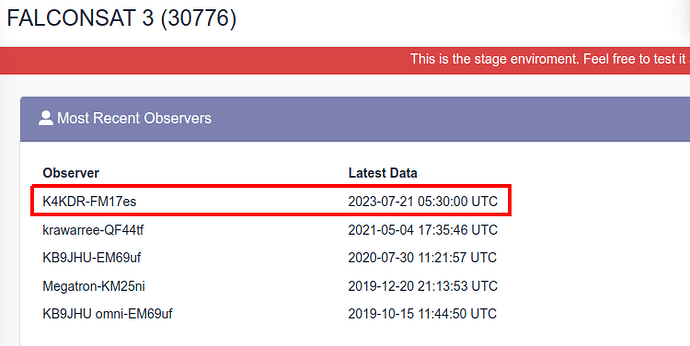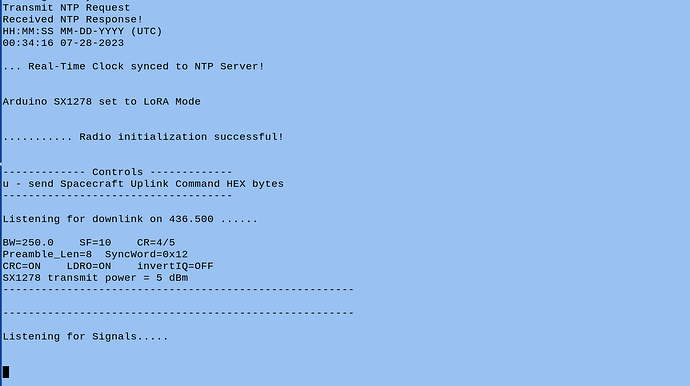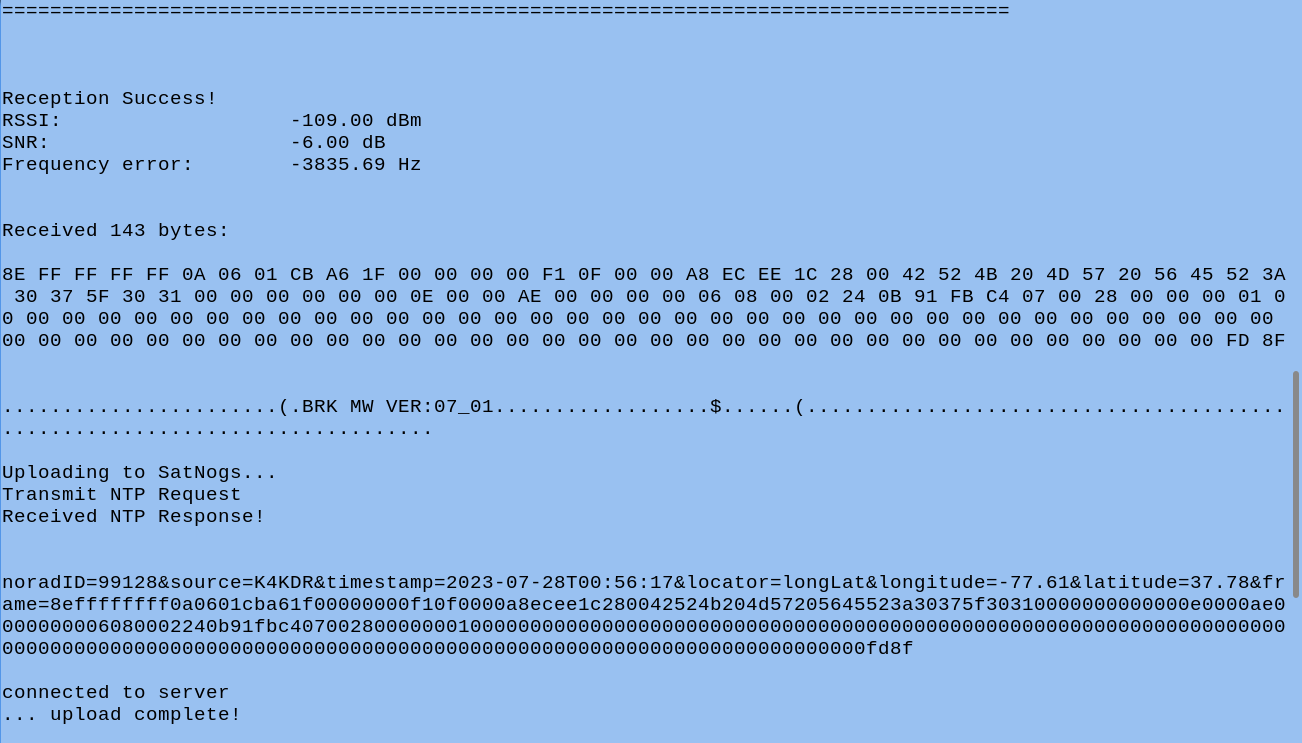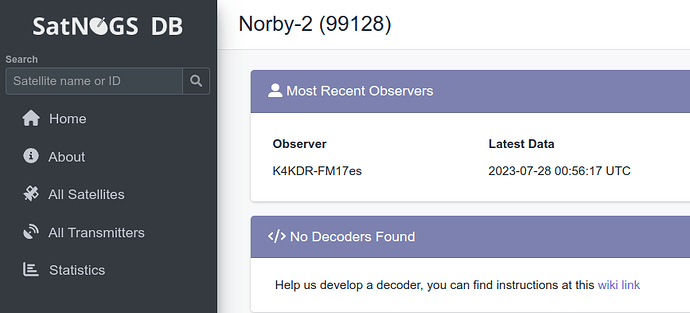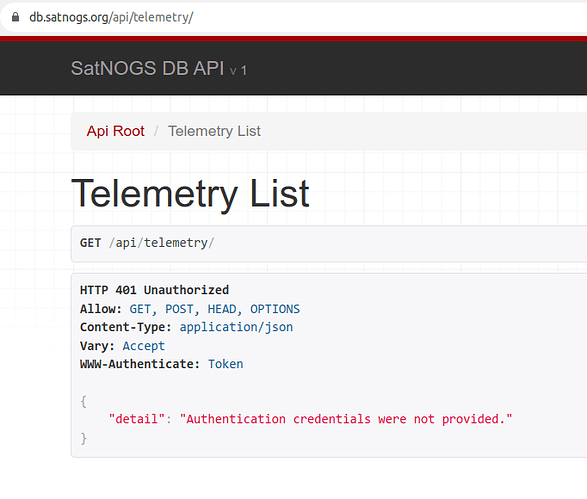Very sorry if this is documented, but I searched & was not able to find it.
This is VERY much out of my area of expertise, but I am attempting to create code to upload decoded bytes to the database via SIDS. I found ‘some’ help online, and by attempting to copy formatting from the submitter app in gr-satellites. However, I’m failing.
Thanks very much in advance if someone could point what I need to adjust, if I’m even close.
The upload steps that I’ve come up with look like:
if (client.connect(server, 443)) {
client.println("POST /api/telemetry/ HTTP/1.1");
client.println("Host: db-dev.satnogs.org");
client.println("Content-Type: application/x-www-form-urlencoded");
client.print("Content-Length: ");
client.println(SIDS_UPLOAD.length());
client.println();
client.print(SIDS_UPLOAD);
}
… and that ‘SIDS_UPLOAD’ string is assembled from the fields & format that I am hoping might be correct. My test example is:
'noradID': 30776,'source': K4KDR,'timestamp': 2023-07-21T05:30:00,'locator': 'longLat','longitude': -77.61,'latitude': 37.78,'frame': 01 02 03 04 05 06,'satnogs_network': 'False','observation_id': ' '
So, am I even remotely close? Or is there a formatting guide that I have failed miserably to find in the SatNogs documentation? Or Option-C… “don’t ever try to program anything ever again”?
Many thanks,
-Scott, K4KDR
